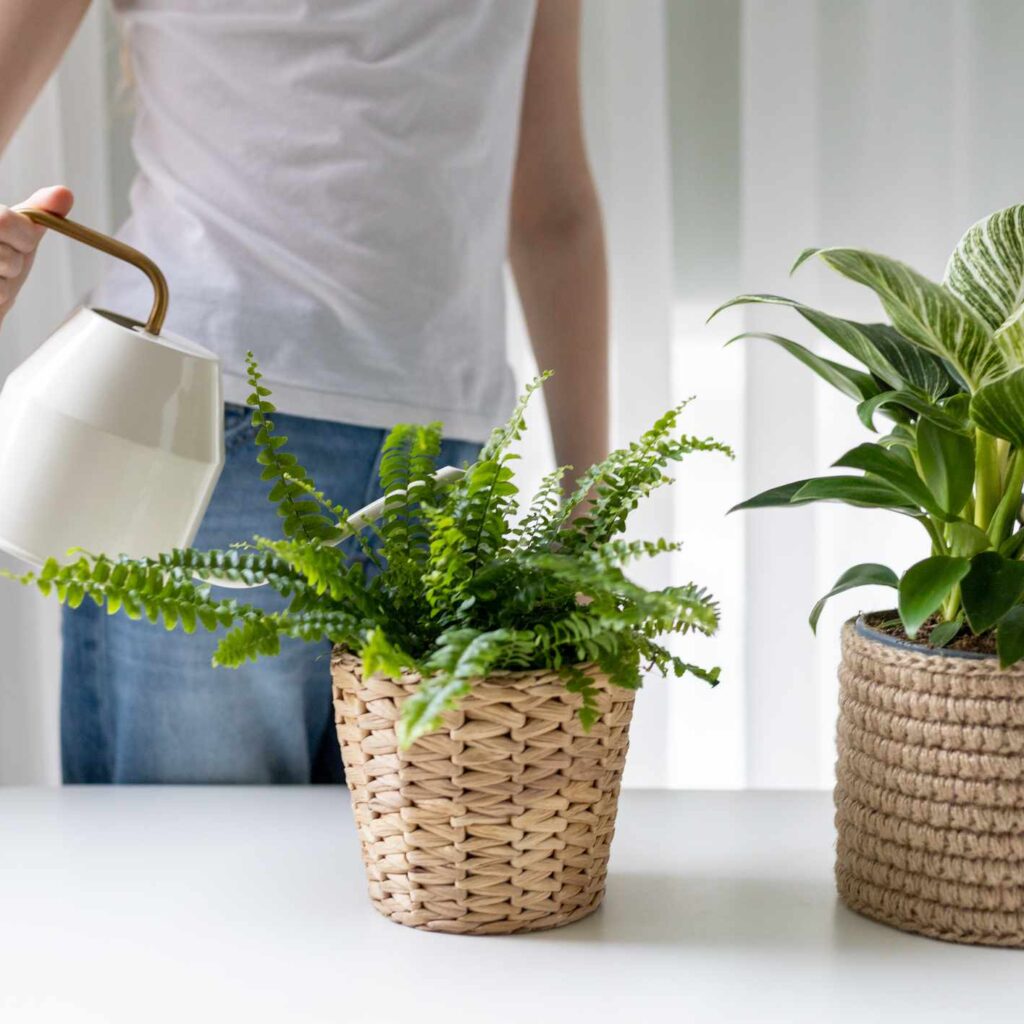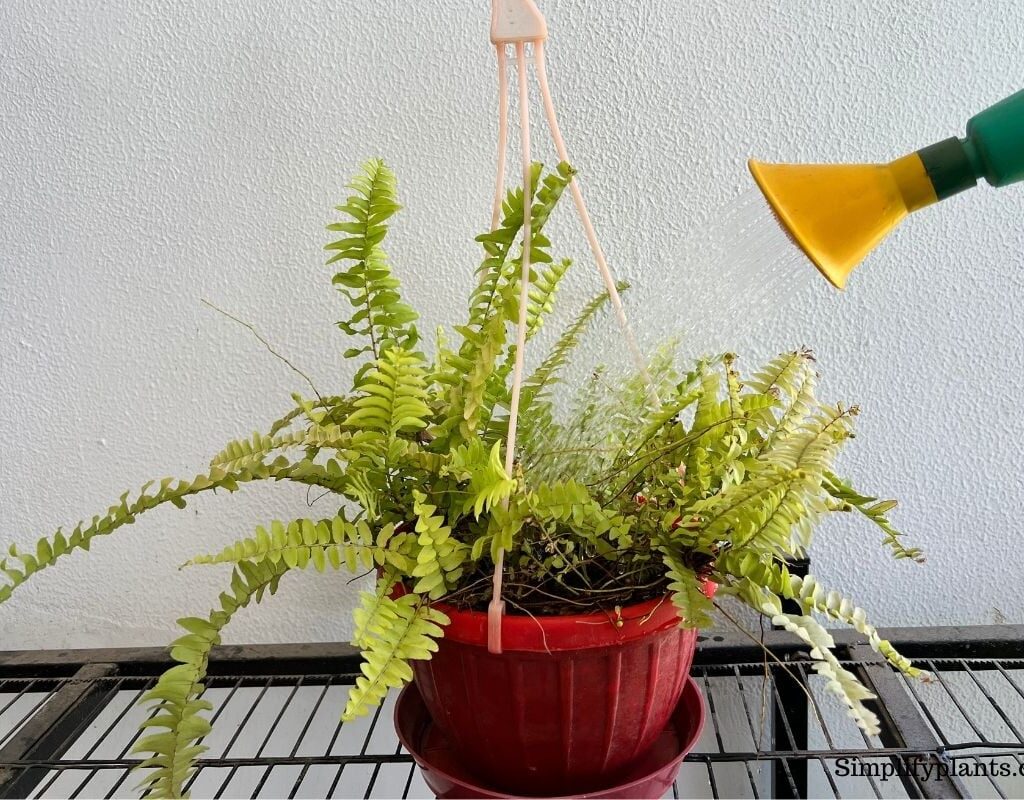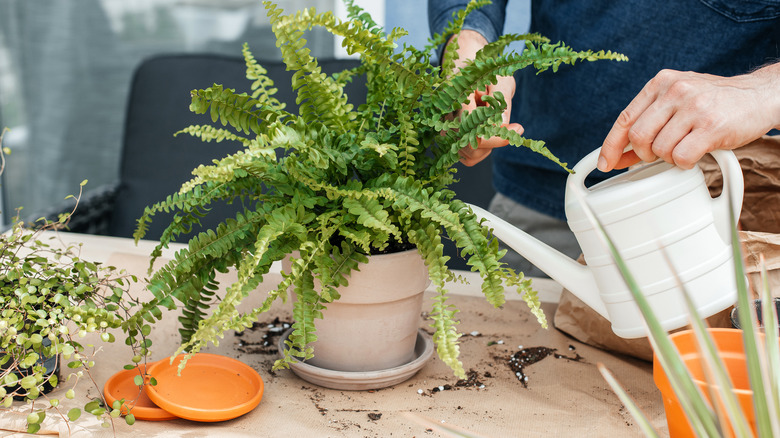Boston Ferns (Nephrolepis exaltata ‘Bostoniensis’) are among the most popular and timeless houseplants, loved for their lush, arching fronds and graceful, feathery foliage. Known for their air-purifying properties and classic beauty, Boston Ferns are perfect for bright indoor corners, patios, hanging baskets, and shaded gardens.
While their rich green leaves add a fresh, calming atmosphere to any setting, Boston Ferns can be a little particular when it comes to watering. The balance between too much and too little moisture is delicate, and getting it right is crucial for their health and appearance.
So — one of the most frequent and important questions from plant owners is:
How often should you water a Boston Fern?
This detailed guide will explore the optimal watering frequency for Boston Ferns, factors that affect their water needs, clear signs of underwatering and overwatering, proper watering methods, and expert care tips to keep your Boston Fern lush, healthy, and thriving.
Introduction to Boston Ferns

Native to the tropical and subtropical regions of the Americas, Boston Ferns are popular both as indoor houseplants and outdoor ornamental ferns. They thrive in warm, humid environments and naturally grow in shaded, forested areas where the soil remains consistently moist but not waterlogged.
Indoors, replicating these conditions — especially regarding watering and humidity — is essential to keeping your Boston Fern looking its best.
How Often Should You Water a Boston Fern?

On average, you should water a Boston Fern every 2–3 days during its growing season (spring and summer) and every 4–7 days during its dormant season (fall and winter).
However, the precise watering schedule depends on several factors such as room temperature, humidity levels, pot size, and light exposure. The best practice is to keep the soil consistently moist but never soggy.
Allowing the top half inch of soil to dry out between waterings is generally recommended.
General Watering Rule:
- Spring & Summer (active growth): Every 2–3 days
- Fall & Winter (dormant season): Every 4–7 days
Important: Always check soil moisture before watering to avoid overwatering.
Factors That Affect Boston Fern Watering Frequency

Several environmental and situational factors influence how often you should water your Boston Fern:
Season and Temperature
- Warm months (spring and summer): Higher temperatures and increased light mean faster evaporation, requiring more frequent watering.
- Cooler months (fall and winter): Lower temperatures and reduced plant activity mean slower water consumption.
Indoor Humidity
Boston Ferns thrive in high humidity environments (50–80%). In dry indoor air, especially during winter when heaters run, the soil dries out faster, and the plant’s fronds may crisp and brown without enough moisture.
Pot Size and Material
- Smaller pots dry out faster than larger containers.
- Clay and terracotta pots are porous and allow water to evaporate more quickly than plastic or glazed pots.
Light Exposure
Ferns prefer bright, indirect light or light shade. More light accelerates water evaporation, increasing watering frequency, while low-light areas will need less frequent watering.
Soil Type
Use a loose, well-draining, and organic-rich potting mix. Soil that’s too dense retains moisture longer and can lead to root rot if overwatered.
Signs Your Boston Fern Needs Watering

A thirsty Boston Fern displays several clear signs. Watch for these indicators:
Dry Topsoil
If the top half inch to inch of soil feels dry to the touch, it’s time to water.
Drooping or Wilting Fronds
If fronds start to droop or collapse, the plant is signaling a need for water.
Crispy, Brown Leaf Edges
Dry, brown tips or edges often indicate prolonged dryness or low humidity.
Leaf Drop
If your fern starts shedding fronds, especially from the center, it may be due to underwatering.
Signs of Overwatering a Boston Fern

While Boston Ferns enjoy moist soil, overwatering is equally harmful and can quickly lead to root rot and fungal problems. Signs of excess moisture include:
Yellowing Fronds
Excessive yellowing, especially at the base, is a common symptom of overwatering.
Mushy or Soft Soil
Consistently wet, soggy soil is a breeding ground for root rot.
Mold or Fungus on the Soil Surface
Persistent dampness encourages fungal growth and unpleasant odors.
Leaf Drop Despite Moist Soil
If fronds drop off while the soil is still wet, it may be suffering from water stress or root problems.
How to Properly Water a Boston Fern
Proper watering technique is just as important as frequency for Boston Fern health:
Use the Even Soaking Method
- Water the plant thoroughly until water runs from the drainage holes.
- Allow any excess water to drain completely — never let the pot sit in standing water.
- Check the soil’s surface moisture daily during warm months.
Tip: During dry seasons or when the air is particularly dry, mist the fronds daily to boost humidity and moisture absorption.
Use Lukewarm or Room-Temperature Water
Cold water can shock the roots, while room-temperature water encourages healthy hydration.
Check Soil Moisture Before Each Watering
Use your finger, a wooden stick, or a moisture meter to gauge soil dryness before watering again.
Seasonal Watering Adjustments for Boston Ferns
A practical seasonal watering guide to help fine-tune your routine:
| Season | Watering Frequency | Notes |
|---|---|---|
| Spring/Summer | Every 2–3 days | Active growth, higher temperatures, and faster evaporation |
| Fall/Winter | Every 4–7 days | Lower temperatures, reduced growth, and less water loss |
Always test the soil’s top layer before watering — even in hot weather.
Best Type of Water for Boston Ferns
Boston Ferns can be sensitive to chemicals like chlorine and fluoride found in tap water. These can cause browning tips and leaf damage over time.
Ideal Water Choices:
- Filtered water
- Distilled water
- Rainwater
- Tap water left to stand for 24 hours
Using these can help keep fronds lush and healthy, especially for sensitive indoor plants.
Additional Boston Fern Care Tips
Alongside proper watering, these care tips will keep your Boston Fern vibrant and healthy:
- Light: Prefers bright, indirect light or partial shade.
- Humidity: Keep humidity levels 50–80%. Use a humidifier, pebble tray, or misting.
- Soil: Use a rich, loose, well-draining potting mix.
- Fertilizing: Feed with a diluted liquid fertilizer every 4–6 weeks in spring and summer.
- Pruning: Regularly trim dead or damaged fronds to promote new growth.
- Repotting: Repot every 1–2 years when roots outgrow the container.
Why It’s Better to Slightly Underwater Than Overwater
Boston Ferns are more tolerant of occasional slight dryness than prolonged sogginess, which leads to root rot. It’s easier for a fern to recover from temporary drought than from waterlogged roots.
When uncertain, check soil moisture first — and mist the foliage if needed before adding water.
Conclusion
How often should you water a Boston Fern?
In general, every 2–3 days in spring and summer and every 4–7 days in fall and winter. However, watering frequency should be guided by soil moisture, environmental conditions, pot size, humidity, and light levels.
By mastering the art of soil-checking, using proper watering techniques, adjusting for seasonal changes, and maintaining humidity, you can enjoy a lush, beautiful Boston Fern that adds life and charm to your home or garden.





